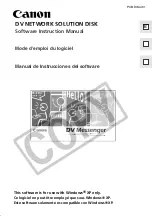
42
ExtremeWare XOS 10.1 Concepts Guide
Managing the Switch
The access control subsystem provides the ability to configure whether access to a managed object in a
local MIB is allowed for a remote principal. The access control scheme allows you to define access
policies based on MIB views, groups, and multiple security levels.
In addition, the SNMPv3 target and notification MIBs provide a more procedural approach for the
generation and filtering of notifications.
SNMPv3 objects are stored in non-volatile memory unless specifically assigned to volatile storage.
Objects defined as permanent cannot be deleted or modified.
NOTE
In SNMPv3, many objects can be identified by a human-readable string or by a string of hex octets. In
many commands, you can use either a character string, or a colon separated string of hex octets to
specify objects. This is indicated by the keyword
hex
used in the command.
Message Processing
A particular network manager may require messages that conform to a particular version of SNMP. The
choice of the SNMPv1, SNMPv2, or SNMPv3 message processing model can be configured for each
network manager as its target address is configured. The selection of the message processing model is
configured with the
mp-model
keyword in the following command:
configure snmpv3 add target-params {hex} <param_name> user {hex} <user_name> mp-model
[snmpv1 | snmpv2c | snmpv3] sec-model [snmpv1 | snmpv2c | usm] {sec-level [noauth |
authnopriv | priv]} {volatile}
SNMPv3 Security
In SNMPv3 the User-Based Security Model (USM) for SNMP was introduced. USM deals with security
related aspects like authentication, encryption of SNMP messages and defining users and their various
access security levels. This standard also encompass protection against message delay and message
replay.
USM Timeliness Mechanisms
An Extreme switch has one SNMPv3 engine, identified by its snmpEngineID. The first four octets are
fixed to 80:00:07:7C, which represents the Extreme Networks Vendor ID. By default, the additional
octets for the snmpEngineID are generated from the device MAC address. Every SNMPv3 engine
necessarily maintains two objects: SNMPEngineBoots, which is the number of reboots the agent has
experienced and SNMPEngineTime, which is the engine local time since reboot. It has a local copy of
these objects and the latestReceivedEngineTime for every authoritative engine it wants to communicate
with. Comparing these objects with the values received in messages and then applying certain rules to
decide upon the message validity accomplish protection against message delay or message replay.
In a chassis, the
snmpEngineID
will be generated using the MAC address of the MSM with which the
switch boots first.
The snmpEngineID can be configured from the command line, but once the
snmpEngineID
is changed,
default users will be reverted back to their original passwords/keys, while non-default users will be
reset to the security level of no authorization, no privacy. To set the snmpEngineID, use the following
command:
configure snmpv3 engine-id <hex_engine_id>
Summary of Contents for ExtremeWare XOS 10.1
Page 12: ...12 ExtremeWare XOS 10 1 Concepts Guide Contents...
Page 15: ...Part 1 Using ExtremeWare XOS...
Page 16: ......
Page 20: ...20 ExtremeWare XOS 10 1 Concepts Guide ExtremeWare XOS Overview...
Page 32: ...32 ExtremeWare XOS 10 1 Concepts Guide Accessing the Switch...
Page 74: ...74 ExtremeWare XOS 10 1 Concepts Guide Virtual LANs VLANs...
Page 80: ...80 ExtremeWare XOS 10 1 Concepts Guide Forwarding Database FDB...
Page 112: ...112 ExtremeWare XOS 10 1 Concepts Guide Status Monitoring and Statistics...
Page 133: ...Part 2 Using Switching and Routing Protocols...
Page 134: ......
Page 174: ...174 ExtremeWare XOS 10 1 Concepts Guide Virtual Router Redundancy Protocol...
Page 184: ...184 ExtremeWare XOS 10 1 Concepts Guide IP Unicast Routing...
Page 202: ...202 ExtremeWare XOS 10 1 Concepts Guide Interior Gateway Protocols...
Page 216: ...216 ExtremeWare XOS 10 1 Concepts Guide Exterior Gateway Routing Protocols...
Page 224: ...224 ExtremeWare XOS 10 1 Concepts Guide IP Multicast Routing...
Page 225: ...Part 3 Appendixes...
Page 226: ......
Page 234: ...234 ExtremeWare XOS 10 1 Concepts Guide Software Upgrade and Boot Options...
Page 242: ...242 ExtremeWare XOS 10 1 Concepts Guide Troubleshooting...
Page 256: ...4 ExtremeWare XOS 10 1 Concepts Guide Index of Commands...
















































